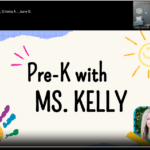Microlearning: What it is, benefits & how well it works for students.
In today’s fast-paced world, parents and educators always are on the lookout for new, innovative ways to enhance children’s learning experiences. One approach gaining traction in the educational landscape is microlearning. It refers to the delivery of educational content in small, bite-sized chunks, typically focusing on a single concept or skill at a time.
But does this method really work, especially in the context of K-12 education? And how does it apply to online schooling for children? Here’s a look into the research behind it to better understand its benefits and how it could be a game-changer for your child’s education.
Why Microlearning is Gaining Popularity in Education
Traditional educational methods often involve long lessons or lectures, which can sometimes overwhelm students and lead to disengagement. This approach presents content in short, digestible pieces that are easier for children to absorb. Research shows that this approach not only keeps students engaged but improves retention rates.
According to studies, learners are more likely to retain information when they are exposed to small, focused learning units rather than lengthy sessions. This technique also appeals to the modern student’s attention span, which has been affected by technology and the digital age. The small scale of each lesson is easier to integrate into a busy daily schedule, making it especially effective for online education environments.
The Science Behind Microlearning
Numerous studies support the efficacy of this technique in various educational settings. One of the key reasons it works is its alignment with how our brains process information. Our brains are better at retaining small chunks of information over longer periods. This often is referred to as “spaced repetition” – a technique that is naturally incorporated.
For example, a study published in the Journal of Educational Psychology found that learners who engaged in short, focused learning sessions retained information better than those who participated in longer, more traditional learning formats. This is particularly beneficial for K-12 students, whose cognitive development is still maturing. Microlearning helps them process information at a pace that suits their developmental stage.
Microlearning in K-12 Education: What Does Research Say?
In K-12 education, it has been shown to improve academic outcomes particularly in areas such as math, reading and science. A key advantage for school-aged children is that it reduces the cognitive load during lessons. Instead of overwhelming students with too much information at once, it delivers bite-sized lessons that easily can be understood and applied.
Incorporating this learning method in the classroom and online school programs enables students to master concepts one step at a time. This process can be done in brief, focused intervals that allow for better concentration and application of new knowledge.
Moreover, it especially can be valuable for online schooling, where students may feel disconnected or struggle with engagement. By delivering content in short bursts, students remain more engaged and less likely to disengage or feel overwhelmed by the amount of material presented at once. This also helps them maintain focus on the task at hand without feeling distracted by external factors.
Benefits in Online Schooling
Online schooling has become increasingly popular in recent years, and microlearning is a natural fit for this mode of education. Here’s how it can benefit both parents and children in online learning environments.
- Flexibility and Convenience: Small portions of content are easy to access and can be consumed on-demand. For busy families, this means that children can learn at their own pace, and parents can schedule lessons around their daily activities. This flexibility is ideal for homeschooling parents or those involved in virtual school programs.
- Improved Focus and Engagement: It encourages short bursts of active learning that helps students stay engaged. Unlike traditional lessons that may run for extended periods, segments are brief, which makes them perfect for online platforms where students can be distracted by technology.
- Personalized Learning Paths: Since it involves digestible content that is easy to measure and track, it allows for personalized learning. Online schooling platforms can use this data to customize lesson plans and offer tailored learning experiences that meet the individual needs of each child.
- Immediate Feedback: Many platforms offer instant feedback after each mini-lesson or quiz, which allows students to understand what they’ve learned and areas that need improvement. This immediate feedback loop is crucial in maintaining motivation and reinforcing learning.
The Research: Does It Really Work?
In addition to anecdotal evidence from parents and educators, there is solid research supporting the effectiveness. The Journal of Applied Learning Technology found that students in microlearning environments demonstrated higher knowledge retention rates and faster learning outcomes than those in traditional learning settings. Additionally, they were able to recall learned concepts for longer periods, which is a testament to the power of bite-sized content.
Another study, conducted by the International Journal of Educational Technology in Higher Education, found that it boosted engagement and completion rates in online courses. While this study focused on adult learners, the implications for K-12 education are clear. The success of this teaching method in adult education programs demonstrates its potential for younger students as well.
How Parents Can Leverage This Method for Their Kids
For parents interested in online schooling or supplemental learning for their children, integrating microlearning into their daily routines can be a simple yet effective way to enhance their children’s education. Here are some strategies.
- Use Apps: Many educational apps are designed around model, offering short, interactive lessons on various subjects. These apps can supplement traditional schooling and provide extra learning opportunities outside the classroom.
- Create a Schedule: Break down your child’s daily study routine into shorter, manageable chunks. For example, focus on a single math problem for 15 minutes, followed by a short reading session. This approach reduces the feeling of being overwhelmed and keeps kids engaged.
- Monitor Progress and Adjust: One of the advantages is that it allows for easy tracking of progress. Regularly check your children’s performance and adjust their learning schedule or content based on their needs.

















